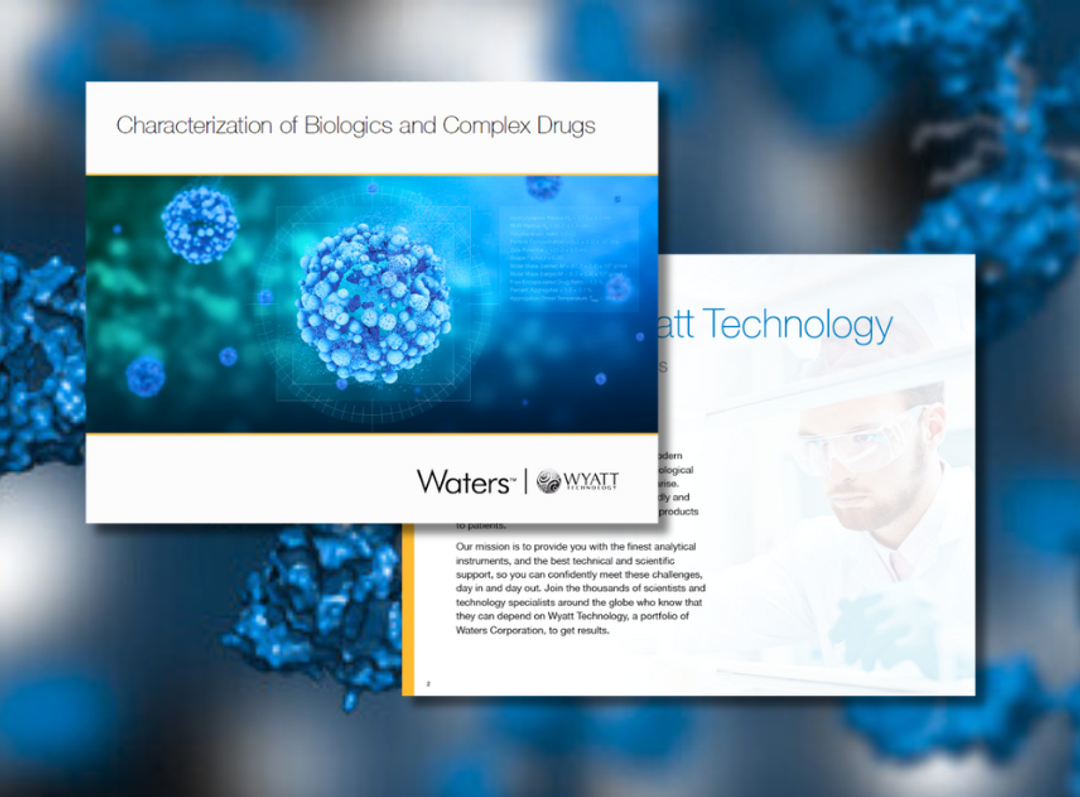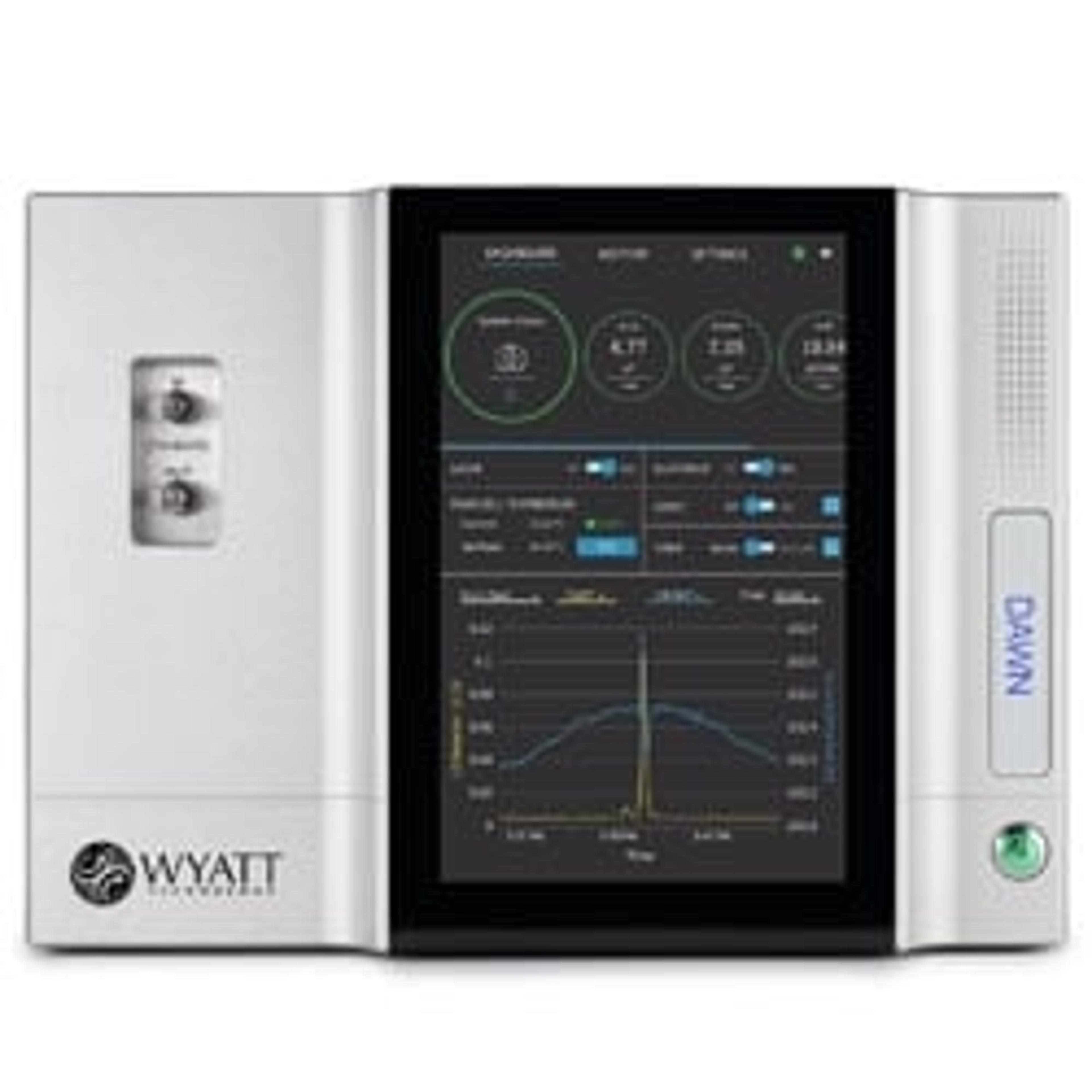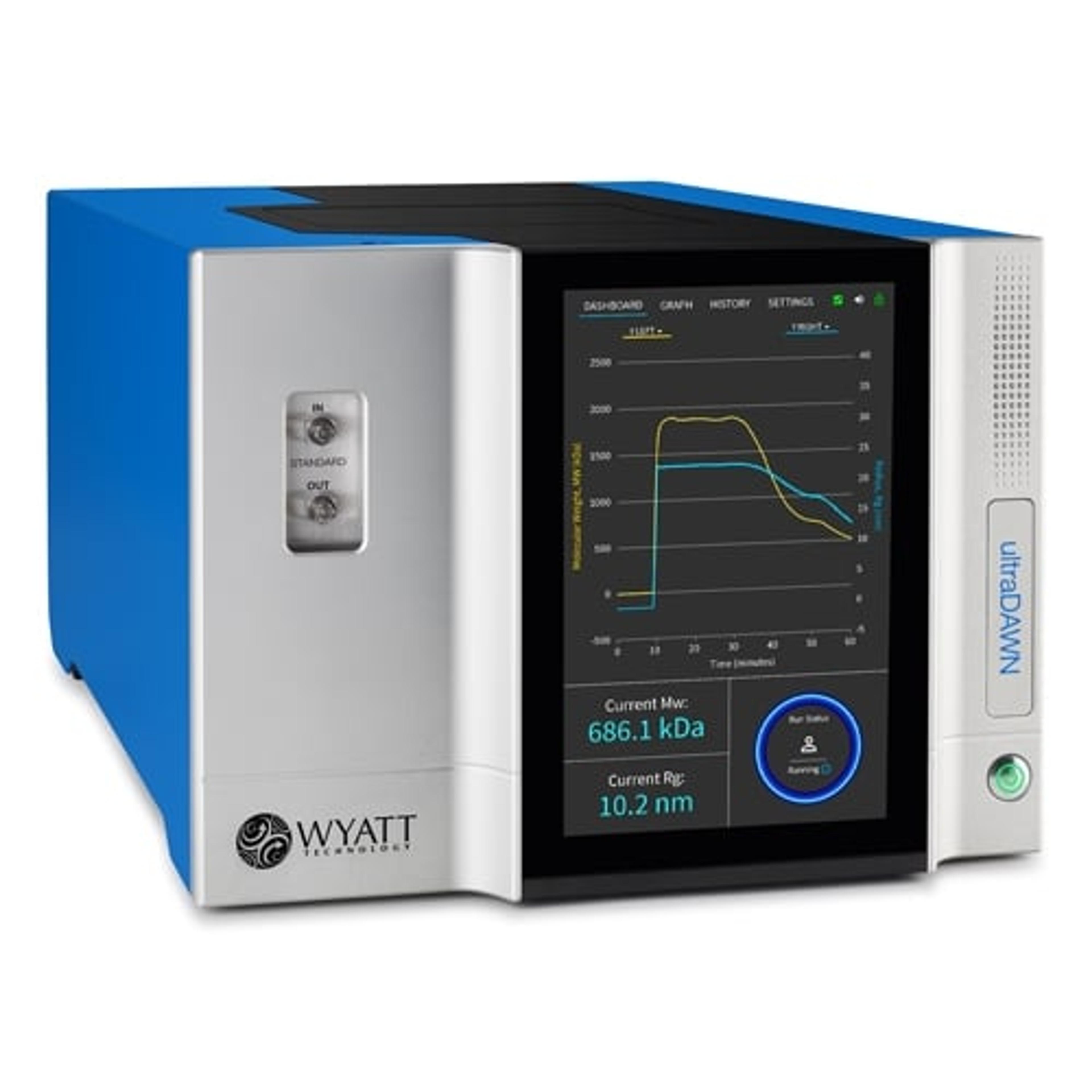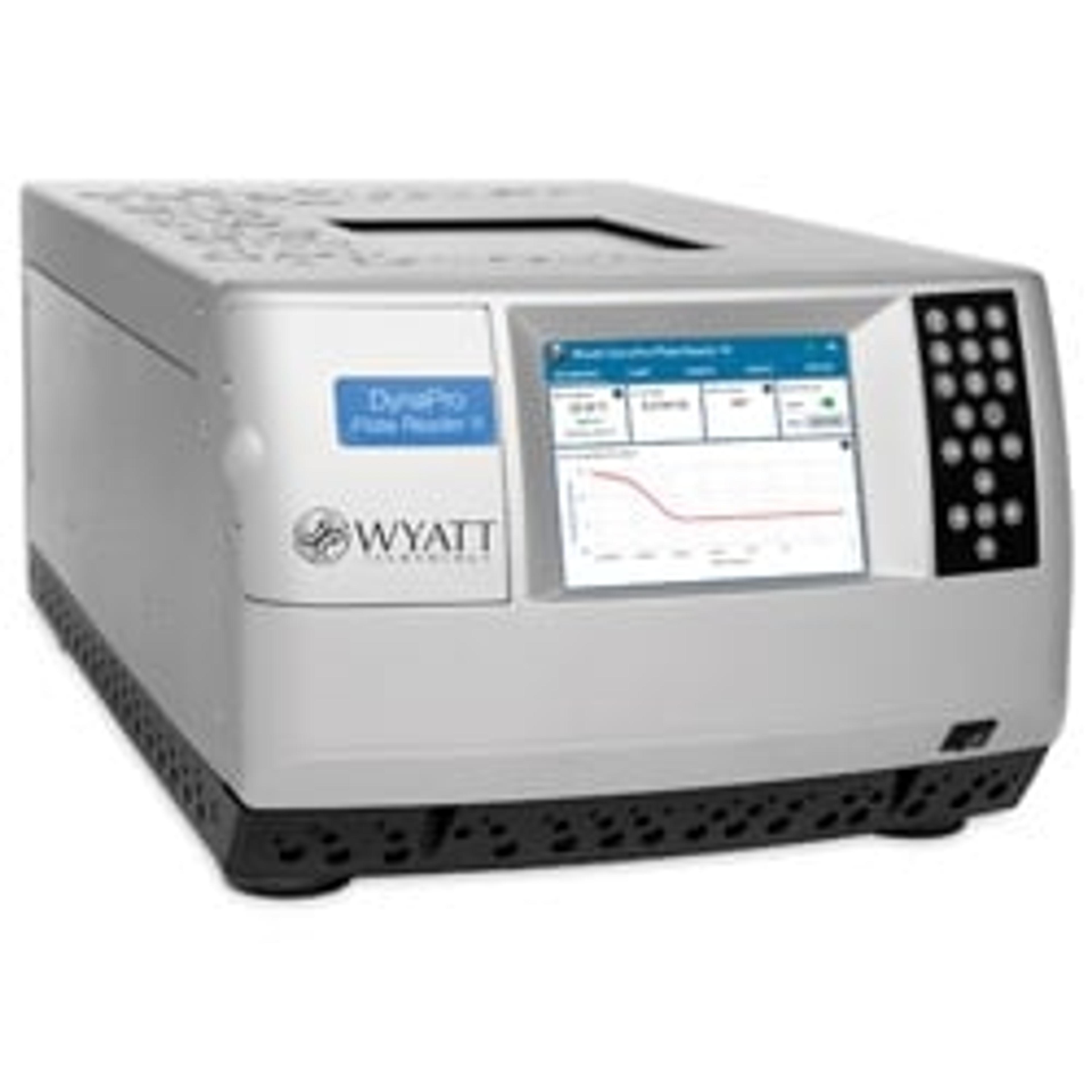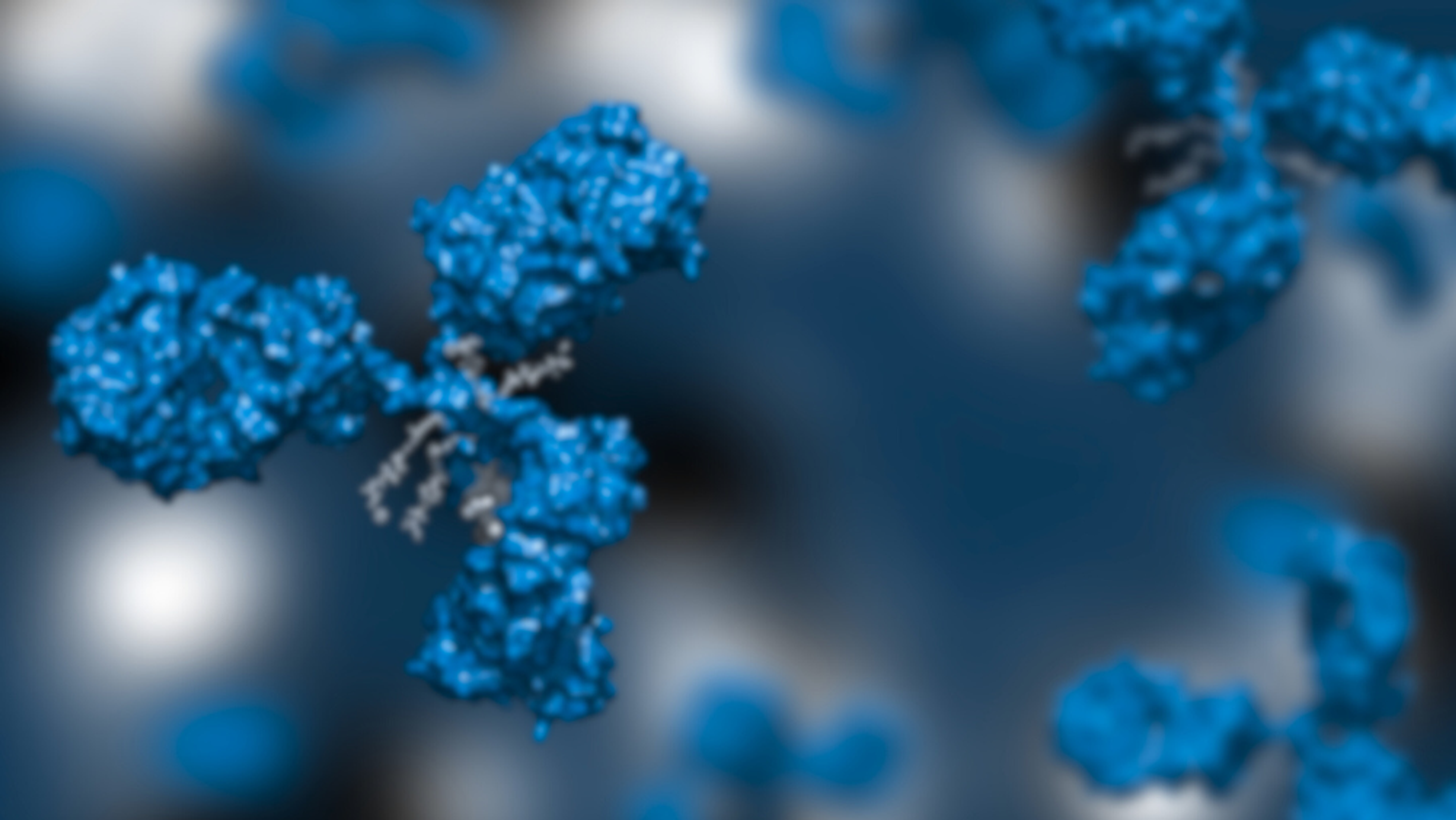
Ensuring biologic quality with advanced light scattering techniques
Biologic drugs have seen a surge in interest over the past 5 years, borne out of their potential to reach their targets with ever-increasing specificity and fewer side-effects, making them a promising solution to many currently unmet needs and intractable diseases in modern medicine. But biologics are often highly complex protein molecules compared with traditional small-molecule drugs and therefore require advanced characterization for molecular certainty.
The complex structure and function of biologics is both a strength and a weakness, since it provides specificity but also presents substantial analytical challenges to those engaged across the full biologics pipeline from R&D to formulation and quality control of the final manufactured product. Biologic proteins aggregate, both with themselves and other contaminant proteins, and undergo complex and unpredictable glycosylation during culture. They are also susceptible to colloidal instability, all of which makes their accurate characterization vitally important throughout the drug development pathway.
The availability of accurate and reproducible protein characterization technologies is therefore of critical importance to biologics production and ultimately their safety and efficacy for patients.
In this immersive content hub, we explore the application of advanced light scattering techniques and linked instrumentation to protein characterization across the biologics pipeline, covering candidate selection and formulation to process development and the quality control of final drug product. Discover how advanced light scattering can integrate seamlessly with existing, standard protein separation technologies.
Watch webinar: Determination of critical product parameters for proteins from research to production
This guide is delivered in collaboration with Wyatt Technology, a Waters Company

Key modalities and tackling characterization
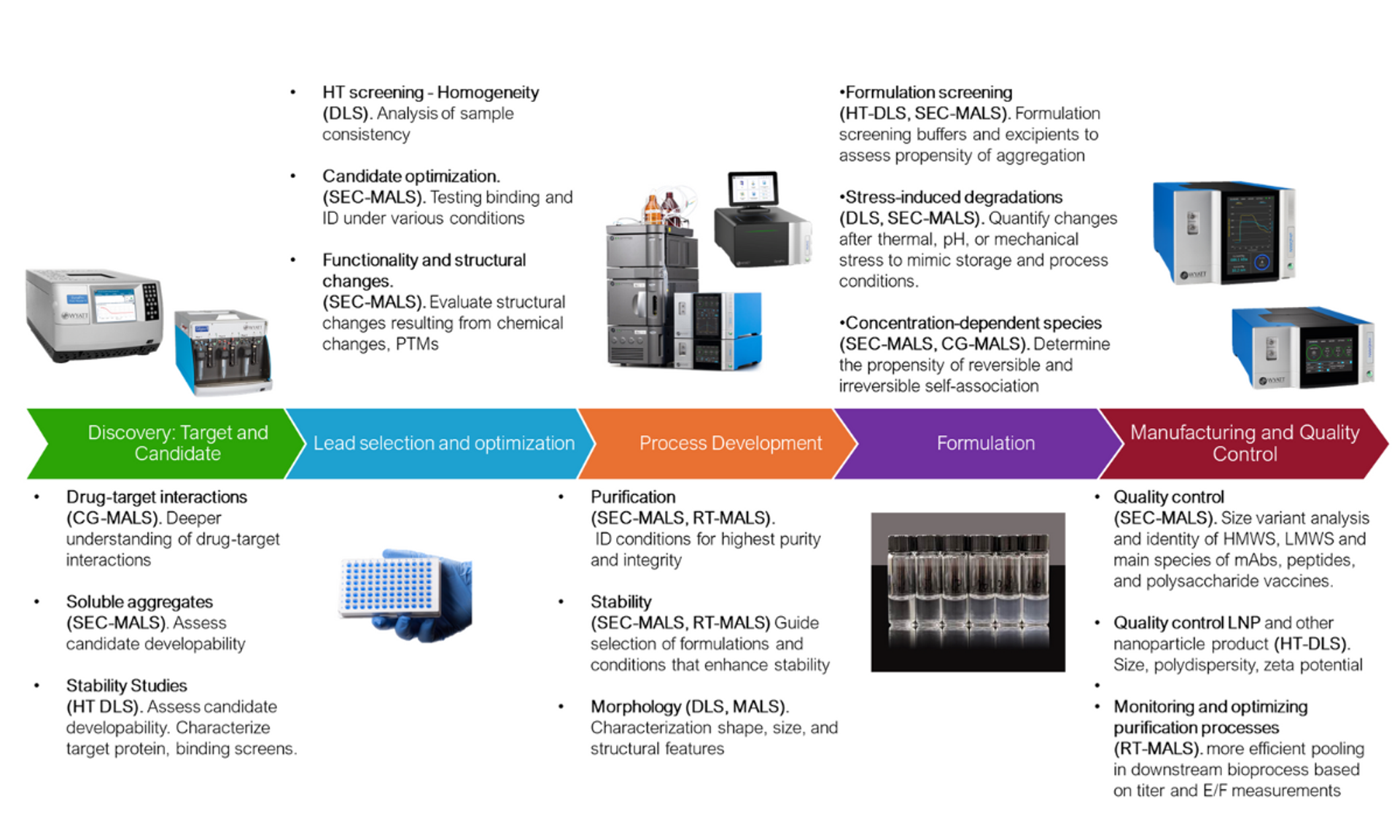
Figure 1. The application of advanced light scattering techniques and linked instrumentation to protein characterization across the biologics pipeline

Worked examples and case studies
In this section, we present a series of six whitepapers and an on-demand webinar that showcase the application of advanced light scattering instruments paired with SEC columns and Ion Exchange (IEX) columns, as well as other standard laboratory equipment, in a range of application contexts.
Discover how DLS, ELS, SEC-MALS, FFF-MALS, IEX-MALS, RT-MALS and Composition Gradient (CG)-MALS are used to assess critical quality attributes such as size, stability, purity and propensity to aggregate in a wide range of biologics and also nanomedicines and polymers.
Gain genuine insight from industry experts into the effective characterization of complex biologics across the whole drug discovery pipeline. From the use of high-throughput (HT)-DLS to screen early-stage drug candidates and help reduce risk, to the use of RT-MALS in process analytical testing for scale-up and manufacturing, Wyatt Technology™, a portfolio of Waters Corporation™ offers solutions that can transform your biologics development and production.
Browse the resources below to see how light scattering technology can optimize your biologic workflows:
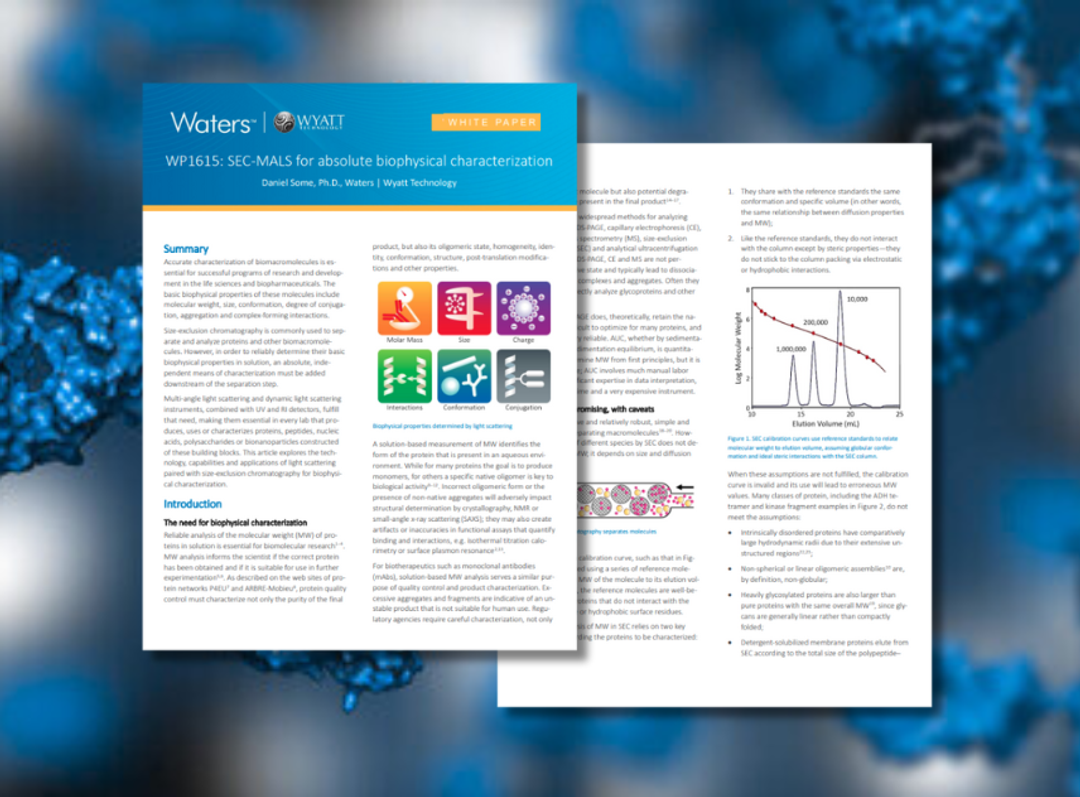
This resource explores the technology, capabilities and applications of light scattering paired with size-exclusion chromatography for biophysical characterization.
Download whitepaper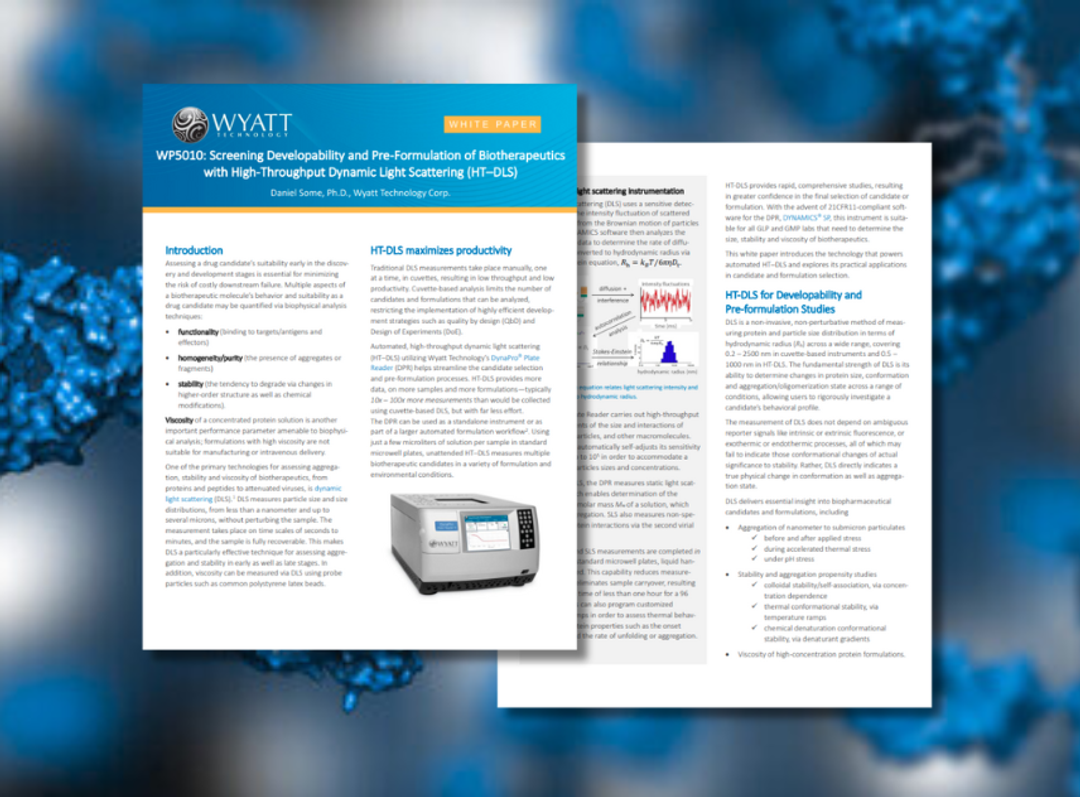
Discover how biophysical analysis, including dynamic light scattering (DLS), helps assess drug candidates early to minimize risks. Explore key techniques for stability, aggregation, and viscosity.
Download whitepaper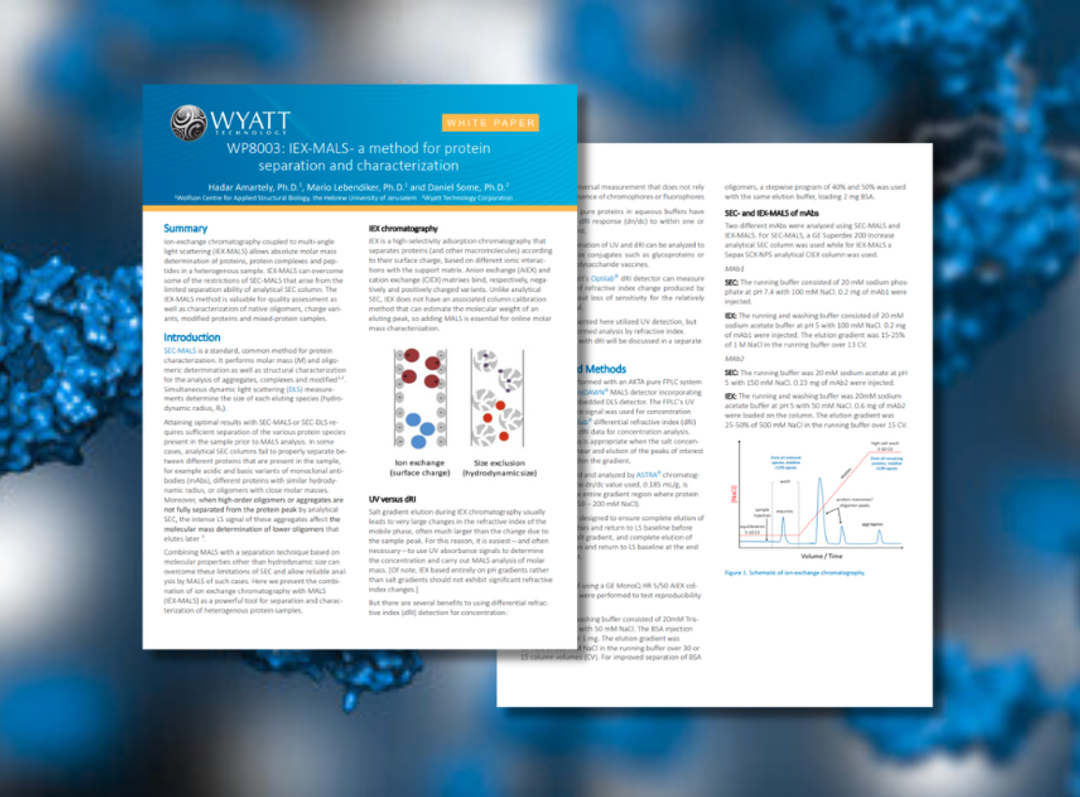
Explore the IEX-MALS method as a valuable tool for quality assessment as well as characterization of native oligomers, charge variants, modified proteins and mixed-protein samples.
Download whitepaper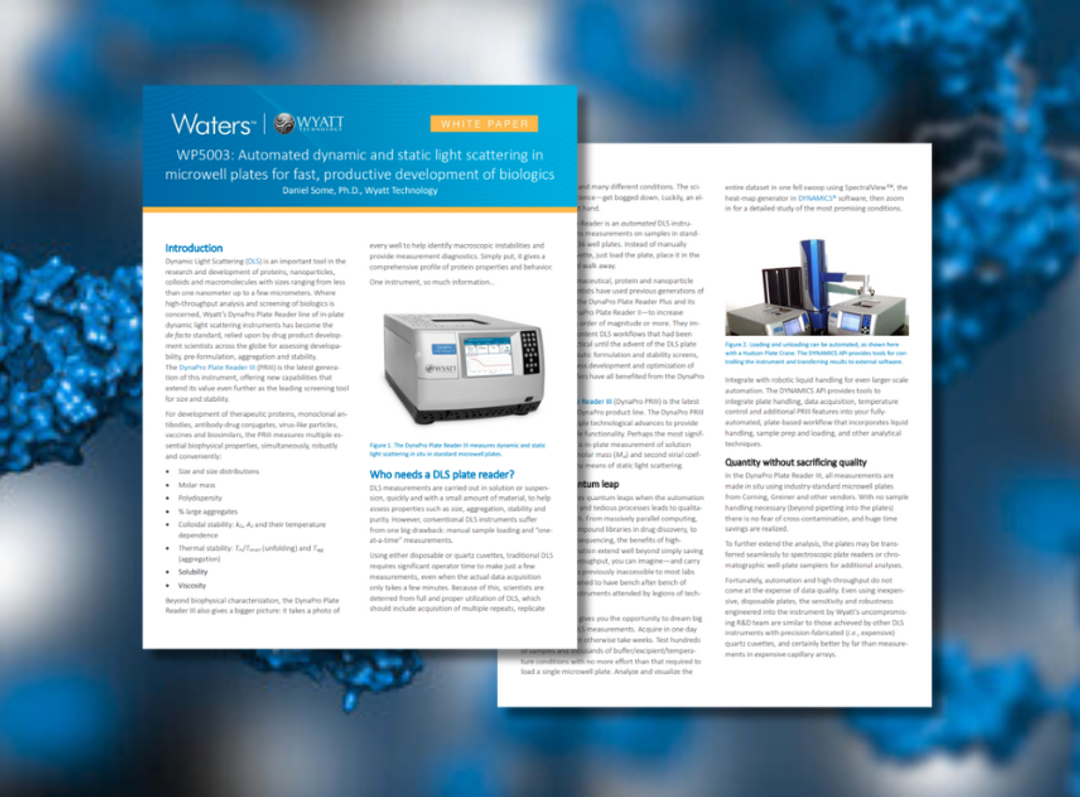
Explore how the DynaPro™ Plate Reader III revolutionizes biologics screening with DLS. Measuring size, stability, aggregation, viscosity, and more.
Download whitepaper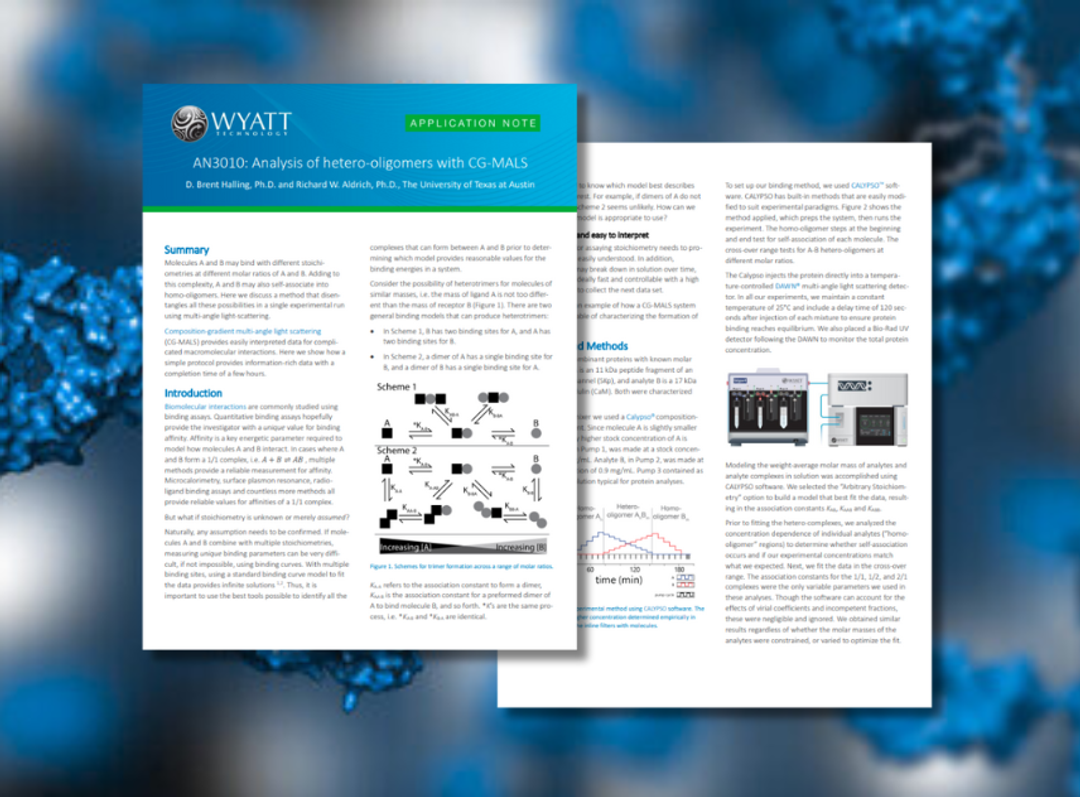
Composition-gradient multi-angle light scattering (CG-MALS) provides easily interpreted data for complicated macromolecular interactions. Discover how a simple protocol provides information-rich data with a completion time of a few hours.
Download whitepaper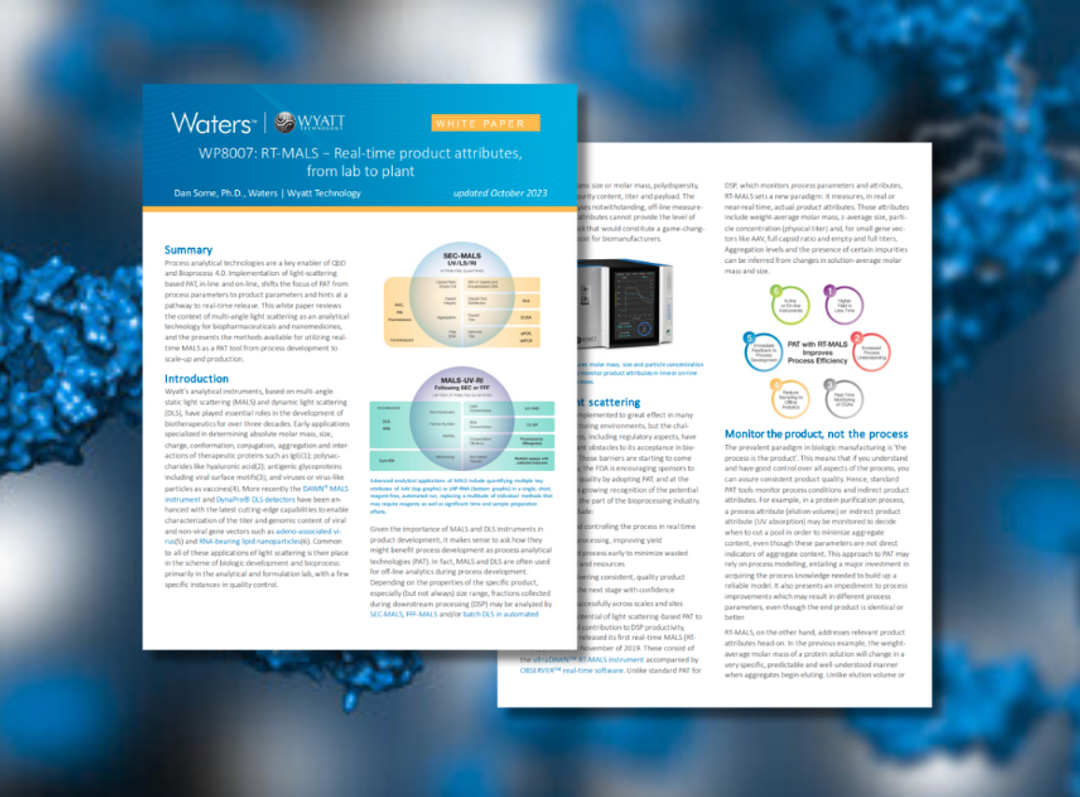
This whitepaper reviews the context of multi-angle light scattering as an analytical technology for biopharmaceuticals and nanomedicines, and presents the methods available for utilizing realtime MALS as a PAT tool from process development to scale-up and production.
Download whitepaperWatch webinar: Towards well-characterized proteins and protein conjugates using SEC-MALS

Featured products and user reviews
Wyatt Technology offers a comprehensive portfolio of analytical solutions that address many of the unique challenges of biologics development and production. The company is a world leader in light scattering instrumentation for characterizing macromolecules and nanoparticles in solution.
Wyatt's products determine absolute molar mass, size, charge, interaction properties, conformation and conjugation, and the company offers a complete suite of multi-angle light scattering (MALS) instruments, field-flow fractionation (FFF) systems, dynamic light scattering (DLS) and zeta potential instruments and detectors to measure refractive index and intrinsic viscosity.
Wyatt Technology’s mission is to provide the finest analytical instruments and the best technical and scientific support to enable you to confidently meet the challenges of accurate, rapid and rigorous quantitative analysis of complex biological and non-biological drugs.

